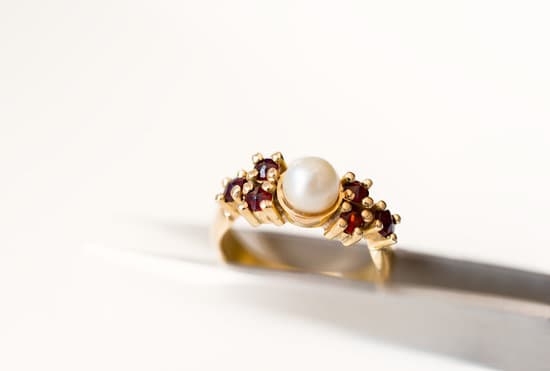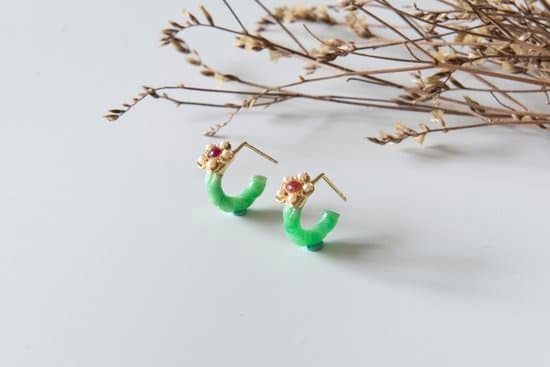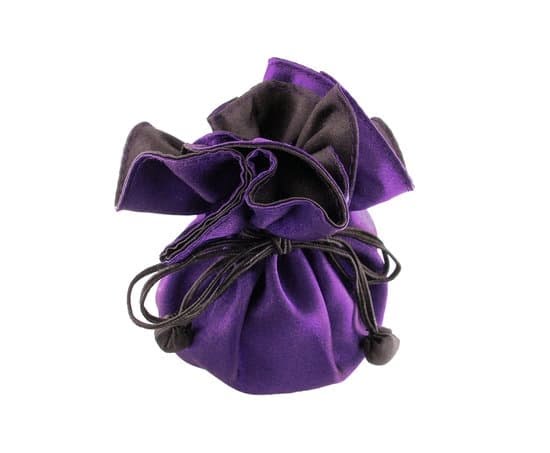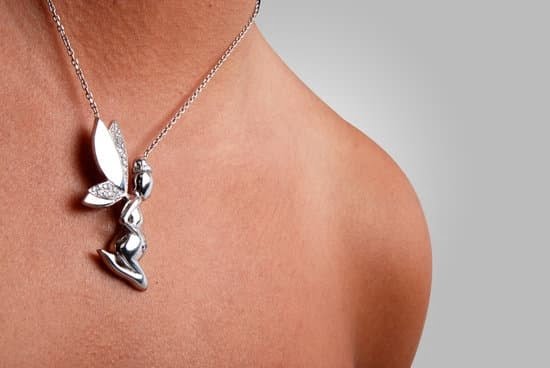The history of Hawaiian jewelry dates back centuries, with deep cultural significance and intricate craftsmanship. From traditional materials and techniques to the evolution of designs over time, Hawaiian jewelry reflects the rich heritage and traditions of the islands. This article provides a comprehensive overview of the history, cultural importance, and evolution of Hawaiian jewelry, shedding light on its timeless beauty.
In this section, we will explore the cultural significance of jewelry in Hawaiian history and how it has evolved over time. From traditional materials like shells, bones, and feathers to contemporary designs that incorporate precious metals and gemstones, Hawaiian jewelry has a deep-rooted connection to the land and its people. We will delve into the role of jewelry in Hawaiian royalty and nobility, as well as its influence on contemporary fashion and trends.
Through the preservation and revival of traditional Hawaiian jewelry making practices, we can appreciate the artistry and craftsmanship that goes into creating these timeless pieces. Join us on a journey through the history of Hawaiian jewelry as we uncover its cultural importance and celebrate the enduring beauty of these cherished adornments.
The Cultural Significance of Jewelry in Hawaiian History
Hawaiian jewelry has a rich cultural significance that dates back centuries, playing a vital role in the history and traditions of the Hawaiian people. From ornamental adornments to symbols of social standing, Hawaiian jewelry holds deep meaning within the native culture.
Symbolism and Meaning
In Hawaiian culture, jewelry was more than just decorative; it was often imbued with spiritual and symbolic meaning. For example, the use of specific materials and designs in jewelry could signify a person’s rank, status, or familial connections. Additionally, certain pieces of jewelry were believed to offer protection or bring good fortune to the wearer, further highlighting their cultural significance.
Connection to Nature
Traditional Hawaiian jewelry often incorporated materials sourced from the natural world, such as shells, wood, feathers, and semi-precious stones. These materials not only added natural beauty to the jewelry but also served as a means for the wearer to connect with nature and honor the land and sea that sustained their communities.
Passing Down Traditions
The tradition of creating and wearing Hawaiian jewelry has been passed down through generations, serving as a way to maintain cultural heritage and celebrate ancestral customs. Families would often pass down heirloom pieces of jewelry, each with its own story and significance, keeping traditions alive for future generations.
As we delve into the history of Hawaiian jewelry, it becomes clear that these adornments are more than just accessories; they are representative of deep-rooted cultural values and beliefs. Through these pieces of artistry, the history and spirit of Hawaii are intricately woven into every design.
Traditional Materials and Techniques Used in Hawaiian Jewelry Making
Hawaiian jewelry making has a rich history that dates back centuries, with traditional materials and techniques playing a crucial role in the creation of these unique pieces. In this section, we will explore the traditional materials and techniques used in Hawaiian jewelry making, shedding light on the cultural significance and craftsmanship involved.
Materials
One of the most common materials used in traditional Hawaiian jewelry making is kukui nuts. These nuts are polished and strung together to create beautiful leis, bracelets, and necklaces. Another important material is black coral, which is harvested from the ocean and intricately carved into stunning jewelry pieces. Additionally, seashells, pearls, and various types of wood are also utilized in crafting traditional Hawaiian jewelry.
Techniques
Traditional Hawaiian jewelry makers often employ hand-carving techniques to create intricate designs on materials such as black coral and wood. This level of craftsmanship reflects the deep connection between the artisans and their cultural heritage. Another notable technique is lauhala weaving, where artisans use leaves from the hala tree to create exquisite woven patterns for accessories like bracelets and earrings. These techniques have been passed down through generations, keeping the art of Hawaiian jewelry making alive.
The Cultural Significance
The use of these traditional materials and techniques in Hawaiian jewelry making goes beyond just creating adornments; it serves as a way to preserve and honor the culture’s rich heritage. Each piece carries with it a story of tradition, craftsmanship, and reverence for nature. The interplay between these materials and techniques contributes to the uniqueness of Hawaiian jewelry, reflecting the island’s natural beauty and cultural authenticity.
As we delve into the historical roots of Hawaiian jewelry making, it becomes clear that these traditional materials and techniques hold significant cultural value that continues to inspire contemporary craftsmen.
Evolution of Hawaiian Jewelry Designs Over Time
Hawaii is known for its rich cultural history and traditions, including the art of jewelry making. Over time, Hawaiian jewelry designs have evolved to reflect the changing influences and trends within the local and global community.
Some key points to note about the evolution of Hawaiian jewelry designs include:
- Incorporation of traditional Hawaiian motifs: Historically, traditional Hawaiian jewelry designs featured motifs such as turtles, waves, flowers, and Maile leaves. These motifs are still prevalent in contemporary designs but have evolved to incorporate modern techniques and styles.
- Influence of other cultures: As Hawaii became a melting pot of different cultures, the jewelry making industry also saw an influence from other traditions, such as Japanese, Chinese, and Filipino craftsmanship. This resulted in a fusion of styles that is unique to Hawaiian jewelry.
- Modern materials and technology: In recent years, there has been a shift towards using modern materials such as metals like gold and silver, gemstones, and innovative techniques in jewelry making. This has allowed for more intricate and detailed designs that cater to the evolving tastes of consumers.
The evolution of Hawaiian jewelry designs over time showcases the adaptability of traditional art forms in a contemporary context while still preserving the cultural significance and beauty that has made it timeless.
Famous Hawaiian Jewelry Styles and Their Origins
Hawaiian jewelry is known for its unique styles and origins, each with a story to tell. Over the years, certain designs have become iconic and are highly sought after by both locals and visitors. Here are some famous Hawaiian jewelry styles and their fascinating origins:
1. Heirloom Jewelry: Heirloom jewelry holds great significance in Hawaiian culture as it is often passed down through generations, signifying the strong connection to family and history. These pieces are typically made of precious materials such as gold and feature intricate engravings of traditional Hawaiian symbols like maile leaves, plumeria flowers, or honu (sea turtles). The craftsmanship involved in creating heirloom jewelry reflects the deep respect for heritage and ancestry in Hawaiian society.
2. Ku’uipo Ring: The Ku’uipo ring is a beloved symbol of love and commitment in Hawaiian culture, with its roots dating back to the 19th century.
Legend has it that Princess Lili’uokalani received a ring from her betrothed that was inscribed with the words “Ku’uipo,” meaning “my sweetheart” in English. This romantic gesture sparked a trend of using the term Ku’uipo in jewelry designs, making it a widely recognized style that carries sentimental value for many couples.
3. Black Coral Jewelry: Black coral is a precious resource found in the deep waters surrounding Hawaii, and its use in jewelry making has been a tradition for centuries. The exquisite black coral pieces crafted into necklaces, earrings, and bracelets showcase the natural beauty of the ocean’s depths while also highlighting the skilled artistry of Hawaiian jewelers.
The history of Hawaiian jewelry is rich with stories that have inspired timeless styles cherished by people around the world. From heirloom pieces to symbolic designs, each style carries cultural significance that continues to captivate enthusiasts today.
Role of Jewelry in Hawaiian Royalty and Nobility
Hawaiian jewelry has always held a significant role in the culture and history of the islands, especially within the royal and noble classes. For centuries, jewelry has been used as a symbol of power, status, and wealth among Hawaiian royalty and nobility, with specific pieces often holding deep cultural significance.
In traditional Hawaiian society, the ruling chiefs and nobles adorned themselves with intricate jewelry made from precious materials such as gold, silver, shells, and feathers. These pieces were not only symbols of social standing but also served as important ceremonial objects used in religious rituals and special occasions. The craftsmanship of these items was highly regarded, with skilled artisans dedicating their talents to creating elaborate designs that reflected the beauty of the natural world.
One of the most iconic symbols of Hawaiian royalty is the Maile lei, a type of necklace made from fragrant maile leaves or other symbolic materials. The Maile lei holds great cultural importance in Hawaiian history and is often associated with sacred ceremonies and celebrations. Another notable piece of royal jewelry is the feathered cloak (ʻahu ʻula) and helmet (mahiole), which were worn by high-ranking chiefs as a symbol of their authority.
The influence of these traditional royal adornments can still be seen in contemporary Hawaiian jewelry designs. Many modern jewelers continue to draw inspiration from these historical pieces, incorporating elements such as maile leaves or feathers into their work. The legacy of Hawaiian royalty and nobility lives on through the timeless beauty and cultural significance of these exquisite jewelry traditions.
Influence of Hawaiian Jewelry on Contemporary Fashion and Trends
The influence of Hawaiian jewelry on contemporary fashion and trends cannot be overstated. In recent years, there has been a resurgence of interest in traditional Hawaiian jewelry designs, with many people embracing the unique and intricate styles that have been passed down through generations. The history of Hawaiian jewelry is rich and diverse, and its impact on modern fashion is undeniable.
One of the most significant ways in which Hawaiian jewelry has influenced contemporary fashion is through the use of traditional materials and techniques. From koa wood and mother-of-pearl to black coral and niho palaoa (whale tooth), these materials continue to be incorporated into modern designs, adding a touch of authenticity to fashion accessories such as earrings, necklaces, and bracelets.
Additionally, the intricate engraving and etching techniques used in traditional Hawaiian jewelry making have inspired contemporary artisans to create pieces that honor the craftsmanship of their ancestors.
Furthermore, famous Hawaiian jewelry styles such as the heirloom bracelet, plumeria flower motif, and maile leaf design have made their way into mainstream fashion, becoming popular choices for both locals and visitors alike. These iconic styles are often seen adorning celebrities and influencers, further propelling the trend of wearing Hawaiian-inspired jewelry. As a result, the demand for authentic Hawaiian jewelry continues to grow, with many seeking out pieces that pay homage to the cultural heritage of Hawaii.
| Influence | Examples |
|---|---|
| Use of traditional materials & techniques | Koa wood, mother-of-pearl |
| Famous Hawaiian jewelry styles | Heirloom bracelet, plumeria flower motif |
Preservation and Revival of Traditional Hawaiian Jewelry Making Practices
Hawaiian jewelry has a rich history that dates back centuries, with traditional designs and techniques being passed down through generations. However, with the influence of Western culture and modernization, there was a decline in the practice of traditional Hawaiian jewelry making. Fortunately, there has been a recent resurgence in interest and efforts to preserve and revive these traditional practices.
In an effort to preserve the cultural heritage of Hawaiian jewelry making, various organizations and artisans have been working to document and teach traditional techniques. This includes the use of native materials such as koa wood, whale ivory, shells, and feathers, as well as traditional methods like hand carving, braiding, and engraving. By keeping these practices alive, they ensure that future generations will continue to appreciate the artistry and cultural significance of Hawaiian jewelry.
One example of the revival of traditional Hawaiian jewelry making is the establishment of workshops and educational programs focused on teaching these ancestral techniques. These initiatives not only provide opportunities for individuals to learn about the history of Hawaiian jewelry but also serve as a platform for preserving indigenous knowledge and skills. Additionally, by incorporating modern interpretations into traditional designs, contemporary artisans are able to keep the art form relevant in today’s fashion landscape while still honoring its roots.
| Traditional Materials | Traditional Techniques |
|---|---|
| Koa wood | Hand carving |
| Whale ivory | Braiding |
| Shells | Engraving |
Conclusion
In conclusion, the history of Hawaiian jewelry is a rich tapestry of artistry and cultural significance. From its humble beginnings using traditional materials and techniques to the evolution of intricate designs, Hawaiian jewelry has stood the test of time as a symbol of beauty and tradition. The cultural significance of jewelry in Hawaiian history cannot be overstated, with pieces often reflecting the natural world, spirituality, and social status within the community.
As we have explored the traditional materials and techniques used in Hawaiian jewelry making, it becomes evident that these practices have been passed down through generations, carrying with them the values and stories of the Hawaiian people. The influence of Hawaiian jewelry on contemporary fashion and trends has opened up new opportunities for artists to showcase their heritage while also offering a unique perspective to global audiences.
Famous Hawaiian jewelry styles such as the heirloom bracelet and plumeria flower designs have captivated people around the world with their timeless elegance.
The preservation and revival of traditional Hawaiian jewelry making practices is crucial in maintaining the cultural heritage of this art form. By honoring the history of hawaiian jewelry through education and support for local artisans, we can ensure that these traditions continue to thrive for future generations to appreciate. It is clear that despite changes over time, the timeless beauty and cultural importance of Hawaiian jewelry will continue to hold a special place in our hearts.
Frequently Asked Questions
What Jewelry Is Hawaii Known For?
Hawaii is known for its traditional and culturally significant jewelry such as the Hawaiian heirloom jewelry, which typically features intricate designs inspired by nature, culture, and history of the islands.
Why Do Hawaiians Wear Gold Chains?
Hawaiians wear gold chains as a symbol of status, wealth, and success. In Hawaiian culture, gold is highly valued and wearing gold jewelry reflects a person’s prosperity and success in life.
Why Is Hawaiian Jewelry So Expensive?
Hawaiian jewelry is often expensive due to the high quality materials used such as gold, silver, and precious stones. The intricate designs and craftsmanship also contribute to the high cost of Hawaiian jewelry, making it a luxury item for many.

Welcome to my jewelry blog! My name is Sarah and I am the owner of this blog.
I love making jewelry and sharing my creations with others.
So whether you’re someone who loves wearing jewelry yourself or simply enjoys learning about it, be sure to check out my blog for insightful posts on everything related to this exciting topic!





